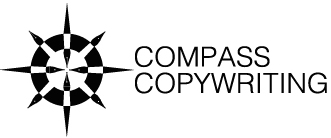Brochures have a place
When I worked in tourism, I was often bombarded with colourful tourist brochures depicting idyllic seaside locations, lush forests and family-friendly visitor attractions. My awareness of these became most evident at tourism trade shows. Here you would see businesses engaged in brochure wars (a case of who can hand out the most that day), thrusting glossy, bound literature in to the hands of unsuspecting visitors.
At my first trade show, I used to roll my eyes deeming this exercise old-fashioned. I mean, who reads brochures in this current digital age? How wrong I was. In tourism, if you don’t produce a brochure, visitors often walk away uninterested as they have nothing tangible to thumb through. This triggered my time writing brochures for both B2B and B2C markets. I became a brochure convert and I realised the importance a booklet had on influencing potential business opportunities.
From online operating manuals to wedding planning and holiday destinations, brochures are still extremely popular with all ages across the world. Being able to work your way through a publication at leisure (either printed or downloaded) often means people can take their time, consider their options and revisit information easily. A brochure will often outline more detailed information and wider product ranges than a brand’s website.
Tips for a successful publication
That’s not to say I haven’t come across some terrible literary specimens over the years. Indeed some businesses ignore the following simple rules, and produce badly written, poorly designed booklets that have helped to give brochure production a bad reputation (old-fashioned, pointless, boring, waste of money etc.).
- Create fluid, informative and waffle-free copy
- Liaise closely with designers, every step of the way. Consider your audience and the type of message you want to convey
- Don’t make a brochure too long. You’ll lose the attention of the reader
- Break up content with clear headings
- Use modern, good quality photos. Bad images will have a negative impact on what you are promoting
- Make contact details very clear. After all, what is the point in reading a brochure if you can’t contact the business?
- Be in control! Don’t let a designer take over something which is your project. Be prepared to make decisions quickly
- Always produce a PDF or downloadable copy, even if you are having it printed
If you would like to know more about brochure copy, please get in touch via my Contact Us page.


